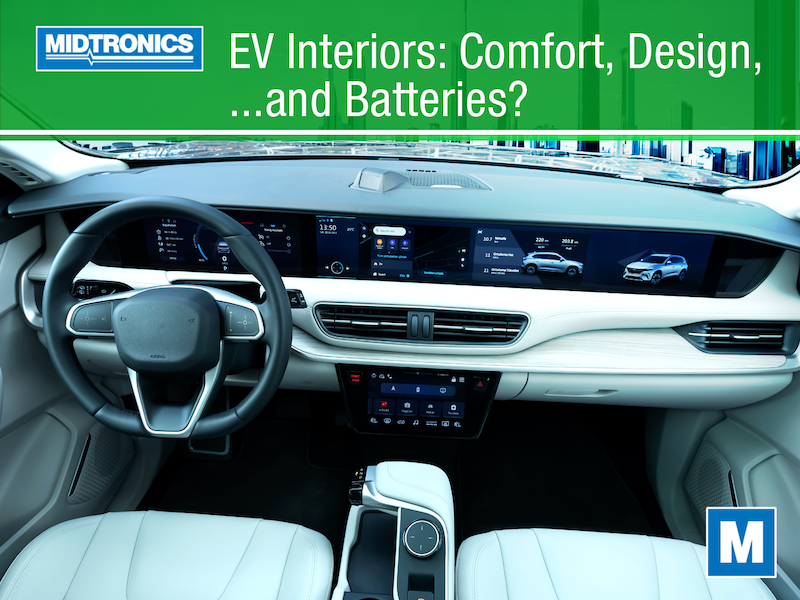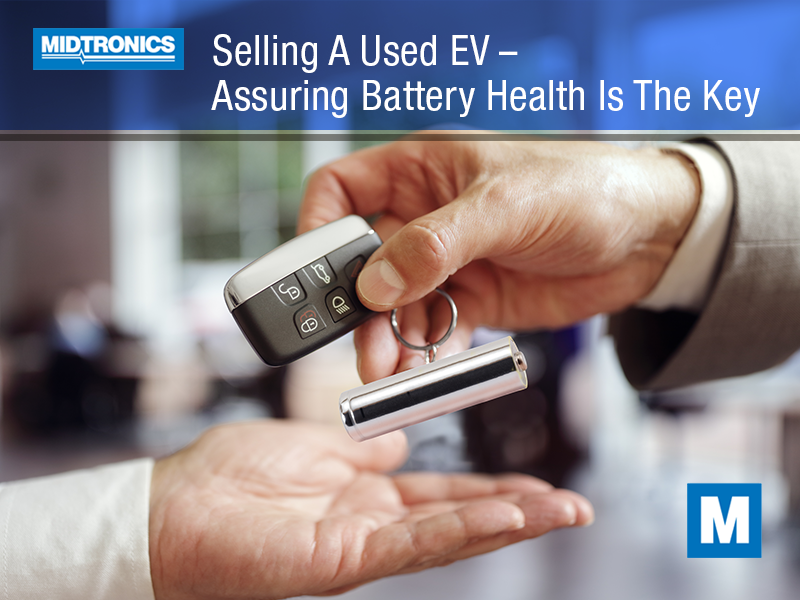The capacity for more storage space in the ‘frunk’. Mind-numbing acceleration from electric motors that produce torque from 0 RPM. The ability to drive past a gas station. Electric cars have clear advantages in many popular aspects, and the interior is certainly no exception. When you climb in the cockpit of an EV or see the upcoming developments for models soon to be released, you can immediately identify a deliberate attempt to make them more driver-centric and more advanced in how you interact with the vehicle and your surroundings.
But this advanced stage of development isn’t taken lightly. With all of the new features – or a more encompassing batch of comforts and conveniences – carmakers are making a trade-off in other areas.
Common EV Interior Comforts
It’s not just what’s under the hood that’s evolving – it’s also what you find inside the cabin. EVs are redefining the driving experience by introducing a range of cabin features that not only cater to modern technology-driven lifestyles but also integrate seamlessly with the specific needs of EVs themselves.
Intuitive Infotainment Integration
EVs often come equipped with large touchscreen displays that provide real-time data on battery charge levels, range estimates, and energy consumption. This level of transparency empowers drivers with crucial information, helping them plan their trips more effectively and make informed decisions about charging stops.
Regenerative Braking Feedback
Some EVs incorporate regenerative braking feedback directly into the cabin. Drivers can adjust the level of regen braking and experience the sensation of energy being reclaimed during deceleration. This not only enhances the sense of control but also serves as a visual and tactile reminder of the vehicle’s energy-saving capabilities.
Customizable Drive Modes
From “Eco” modes optimized for maximum efficiency to “Sport” modes that deliver instant torque for a more exhilarating ride, driving modes offer a dynamic and adaptable driving experience. The cabin serves as the command center for switching between these modes, giving drivers the ability to optimize their journey based on factors such as battery range and driving conditions.
Passenger Comforts
While a broad category, passenger comforts can include heated, ventilated, and massaging front seats to multi-zone climate control, LED lighting, and giant screens. Where systems used to be analogous, they’ve now been developed to be electronic.
Cabin Preconditioning
With the ability to remotely heat or cool the cabin before departure, drivers can step into a comfortable environment without relying solely on the vehicle’s main battery for climate control. This feature is not only convenient but also helps optimize the battery’s available energy for driving rather than climate control.
Advanced EV Safety Features
Safety has always been a paramount concern in the automotive industry, and EVs are taking safety to a whole new level with their innovative interior features. These features not only prioritize the well-being of passengers but also capitalize on the inherent advantages of EV technology to enhance overall safety.
Enhanced Noise Management for Pedestrian Safety
The quietness of electric vehicles can be a safety advantage, particularly for pedestrians. To address the potential risk of pedestrians not hearing approaching EVs, manufacturers are introducing external sound systems that emit simulated engine sounds when the vehicle is operating at low speeds. This acoustic alert system enhances pedestrian awareness and safety, bridging the gap created by the near-silent operation of electric powertrains.
Integrated Advanced Driver Assistance Systems (ADAS)
Many modern EVs come equipped with comprehensive Advanced Driver Assistance Systems that leverage sensors, cameras, and radar technology to enhance safety. These systems offer features like adaptive cruise control, lane departure warnings, automatic emergency braking, and more.
Battery Safety and Thermal Management
Electric vehicles are equipped with advanced battery management systems that prioritize safety. These systems monitor battery health, temperature, and overall performance. Cabin displays often provide real-time information on battery health and temperature, empowering drivers with critical data related to the heart of their EV’s power source.
Emergency Services Integration
Some EVs offer specialized emergency services integration, enabling quicker response times in case of accidents. These systems can automatically contact emergency services and provide them with essential information about the vehicle’s location and condition.
Where the Dichotomy Exists
But for each of these advanced systems, there are now sensors and modules required to operate them. On their own, it’s a very minimal draw that powers the feature, making it a logical choice to include even the most power-hungry of the lot, like cabin preconditioning systems. Where the rub exists is when dozens of these features come together in one vehicle, and the energy consumption becomes quite noticeable.
Range anxiety remains one of the predominant barriers to EV adoption, and these technologies begin to sap away at the vehicle’s ability to achieve its real-world range targets.
As well, it’s no surprise to anyone in the automotive industry that the higher the strain on a battery, the shorter its lifespan becomes. It begets additional resource requirements like more powerful cooling systems to prevent thermal events in the EV battery.
The Balance Between Technology and Battery Conservation
Car manufacturers spend immense amounts of money, time, and resources to develop comforts and conveniences for a more driver-centric EV interior. While it’s intended for a better user experience (UX), it also allows for a granular look at the energy consumption and the effect on the EV’s HV battery and SPC 12-volt battery. There may be instances where, rather than simply adding a feature that drivers would prefer to have, there are lesser-used features that are removed. Or, as it’s more commonly seen today, only higher trim levels with a long-range battery pack receive comforts and conveniences since their batteries can support the load sufficiently.
Regardless of the features a vehicle contains, there comes a time when the EV’s HV battery will require servicing or the SPC battery requires replacement to keep the systems operational. As battery health degrades, manufacturers and dealers need to be prepared to service EVs, retaining their battery range or restoring it. A comprehensive EV service program is necessary, and perhaps more so for the feature-laden long-range battery-equipped models.




